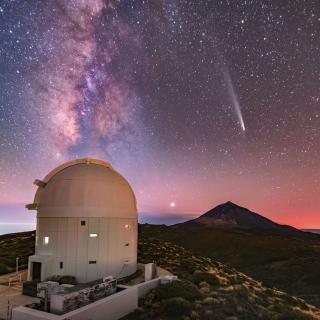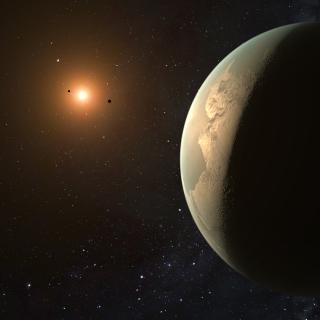It may interest you
-
 En 2025, el Instituto de Astrofísica de Canarias (IAC) celebra el cuarenta aniversario de su inauguración oficial en 1985, consolidándose como uno de los principales centros de investigación de Astrofísica a nivel internacional.Advertised on
En 2025, el Instituto de Astrofísica de Canarias (IAC) celebra el cuarenta aniversario de su inauguración oficial en 1985, consolidándose como uno de los principales centros de investigación de Astrofísica a nivel internacional.Advertised on -
 An international team, led by a student from Instituto de Astrofísica de Canarias (IAC), has detected a super-Earth orbiting in the habitable zone of GJ 3998, a nearby red dwarf located 59 ly away. The new planet, named GJ 3998 d, is the third planet found in the system. ‘GJ 3998 d is a welcome addition to the planetary census of our cosmic neighbourhood’, states Atanas Stefanov, a "La Caixa" funded PhD student at the IAC and the University of La Laguna (ULL) and the study’s lead author, published in Astronomy & Astrophysics . 'This super-Earth appears to be in the habitable zone of one ofAdvertised on
An international team, led by a student from Instituto de Astrofísica de Canarias (IAC), has detected a super-Earth orbiting in the habitable zone of GJ 3998, a nearby red dwarf located 59 ly away. The new planet, named GJ 3998 d, is the third planet found in the system. ‘GJ 3998 d is a welcome addition to the planetary census of our cosmic neighbourhood’, states Atanas Stefanov, a "La Caixa" funded PhD student at the IAC and the University of La Laguna (ULL) and the study’s lead author, published in Astronomy & Astrophysics . 'This super-Earth appears to be in the habitable zone of one ofAdvertised on -
 The Instituto de Astrofísica de Canarias (IAC) is positioning itself as one of the main partners of the Government of the Canary Islands in the Canary Islands Aerospace Strategy, presented this Wednesday by President Fernando Clavijo. The goal is to position the archipelago as a key player in a rapidly growing sector, promoting innovation, technology transfer, and the creation of high value-added jobs.Advertised on
The Instituto de Astrofísica de Canarias (IAC) is positioning itself as one of the main partners of the Government of the Canary Islands in the Canary Islands Aerospace Strategy, presented this Wednesday by President Fernando Clavijo. The goal is to position the archipelago as a key player in a rapidly growing sector, promoting innovation, technology transfer, and the creation of high value-added jobs.Advertised on
